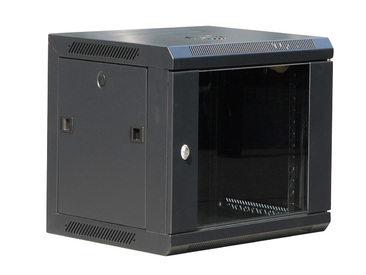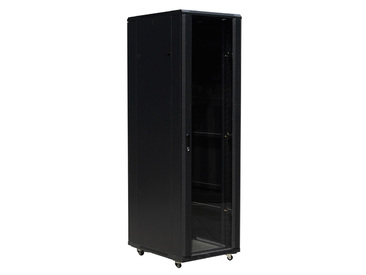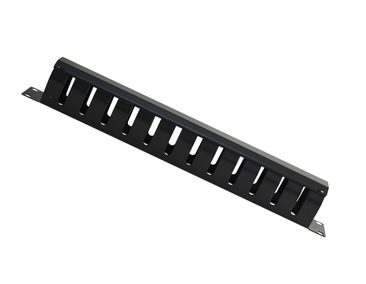



Network cabinets are generally used for the storage of routers, patch panels, switches and a wide variety of networking equipment as well as networking accessories. In most cases a network cabinet will be far shallower than a server rack cabinet, generally measuring in at less than thirty one inches deep.
Known by many names, a network rack is a metal frame chassis that holds, stacks, organizes, secures and protects various computer network and server hardware devices. The term "network" refers to the rack being used to house network hardware like routers, switches, access points, and modems.
The main difference between a cabinet and a rack is that racks are open and have no sidewalls, while cabinets are enclosed on all sides.
There are three primary types of racks: open frame racks, rack enclosures and wall-mount racks. Open frame racks are just that—open frames with mounting rails, but without sides or doors. They're typically used for applications where the rack does not need to control airflow or provide physical security.
A "Rack Unit" is equal to 1.75" in height. To calculate the internal useable space of a rack enclosure you would simply multiply the total amount of Rack Units by 1.75". For example, a 44U rack enclosure would have 77" of internal usable space (44 x 1.75).
Sep 30 , 2024
2024 Mid-Autumn Festival Holiday Notice
Sep 14 , 2024